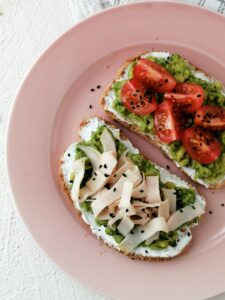Diabetes and diets
When it comes to diets, my favorite diet is see food, see food and eat. As I have aged things are changing, I can’t eat like I used to, nor do I really want to. Gone are the days of eating everything that I could put on my plate. Gone are the days of going to a buffet and seeing how many plates of food I could eat. It would drive my wife crazy when I would be stacking up plates as badges of honor. Now each plate is a reminder of heartburn and indigestion. Now as I slide into prediabetes the idea of having to be more aware of what I’m eating reduces the joy of eating more to a task. This article is a journey into the various diets and how they may match up with prediabetes and type 2 diabetes needs. Diabetes and diet are becoming a way of life.
When starting this diet quest, it became obvious that there are many diets, but not every diet may line up with people with prediabetes and type 2 diabetes. I’ll select various diets and review how well you line up for people with this condition. So here we go.
It seems that when you start to explore diets and what is good the field becomes very fuzzy. Everyone wants you to try the diet plan because it’s good for you, in their opinion.
Lifestyle changes are common sense
Beginning to make this type of lifestyle change takes good old common sense. If you what to reverse the ways that got to where you are now, you just have to do it. Before looking at any diet plan there are some key points to remember, they are:
Portion size – When it comes to maintaining a healthy lifestyle, your diet is a very important aspect. It’s important to watch the portion size of what you eat, as well as be mindful of the calories and other nutritional information that you’re consuming.
We recommend cutting back on fried foods, sugary drinks, and anything salty or fatty. You should also be focusing on lots of veggies with whole grains, lean protein, low-fat dairy products, and fruit.
Your doctor or diabetes coach can help you fine-tune your diet by making it more specific to your needs. This will help to decrease the likelihood of diabetes-related complications and improve your quality of life.
Lower carbs – You don’t have to completely give up carbohydrates just because you have diabetes. If you would like to try a different diet that limits them, such as Atkins or South Beach, talk to your doctor to see if it is right for you.
State-of-the-art research on the benefits of low-carb diets for type 2 diabetes is still mixed, but a review authored by 25 leading experts in the field found that this style
of eating should be the first step in managing the disease because it can “reliably reduce high blood glucose.”
Processed food – Nowadays, we’re bombarded with a vast array of food choices. Most people choose to select the quickest, easiest, and cheapest foods that are on offer when they have the option. This means that we end up getting a diet comprised primarily of overly processed foods that are excessively high in fat.
A lot of people don’t know what “processed food” is and many don’t even realize that it is a subcategory of food. When the primary focus of one’s diet revolves around this
kind of food on a regular basis, it becomes an issue, even though occasional consumption of this food is not a big deal. One underlying problem is the fact that processed food contains ingredients like high fructose corn syrup,
As we said earlier there are many types of diets. We will review a couple here and now, but over time we will select more so you can decide which one fills your lifestyle.
A couple of diet plans
There are many reasons why the Mediterranean diet is good for diabetes. Firstly, it is very flexible. Following a strict diet that has many forbidden foods can not only be hard to follow for an extended period of time but also make it difficult to enjoy your meals with your family.
Managing diabetes can be a difficult process, but there are many healthy options that can help. Maintaining a healthy diet, getting more exercise, and including plenty of the right foods (such as those found in the Mediterranean) that help with blood sugar control can drastically improve the process. Limiting foods that raise blood sugar levels quickly (like sugar-heavy sweets or refined grains) can also be beneficial in helping manage both weight and diabetes.
The Mediterranean diet is a wonderful choice for those with diabetes, considering its high intake of heart-healthy fats while restricting saturated fats from red meat and of course high-fat dairy. As well as the diet includes plenty of foods rich in natural antioxidants and polyphenols that help control blood sugar levels.
On top of providing a healthy diet, incorporating plenty of fiber-rich foods into your diet can help manage your blood sugar levels. Fiber-rich foods include whole legumes, grains, and fresh produce, and when digested slowly it slows down the rate at which sugar enters your bloodstream. This helps prevent blood sugar spikes by slowing down the rate at which sugar enters your bloodstream.
DASH diet plan – The DASH (Dietary Approaches to Stop Hypertension) diet is built around incorporating healthy eating habits into your lifestyle. This includes substituting whole food for processed foods to reduce the intake of sodium, sugar, and saturated fats. It also means finding a balance between lean meats and plant-based proteins to ensure that you avoid excessive consumption of animal products.
One of its points is to cut back on salt. The American Heart Association recommends that people limit their daily intake of salt to 2,300 mcg per day. It’s about half of a small amount of salt. If you want to reduce your blood pressure more, drop the amount of salt to 1,500mg, or about a third of a cup of salt.
The addition of oils rich in omega-3 fatty acids, almonds and walnut, flaxseeds/linseeds, and avocados to your diet can help you control your blood sugars and give you more energy.
DASH is not an eating plan you follow for a short period of time. It’s designed to provide lifelong nutrition for people with diabetes. To improve your health, it is important to make small changes that are sustainable. This means that you should start by reducing your sugar intake or adding more fruits and veggies to all meals. Also, spice up your meals and move away from salt it will bring more excitement to your table.
The diet provides you with the flexibility to choose how you want to begin and what steps you would like to take, as well as when. It is also important for you to remember that the diet is not a short-term solution and it does require a commitment from your end.
If you’re looking for a good place to start, you may want to explore the National Heart, Lung, and Blood Institute’s database of DASH-friendly recipes. The DASH diet is all about moderation and balance and it doesn’t matter if you’re diabetic or have high blood pressure, this eating plan can work for anyone. Find healthier alternatives to your favorite meals while still being able to manage your diabetes with the help of this database.
There is no one way to deal with diabetes. Diabetes and diet are how one deals with life. There are many ways to change your lifestyle to achieve success in lowering your blood sugar. Diet is one place to start with. We will review other lifestyle changes in future articles. Let us know what you would like to see.
Please follow our Facebook page and check out our other blog articles.








